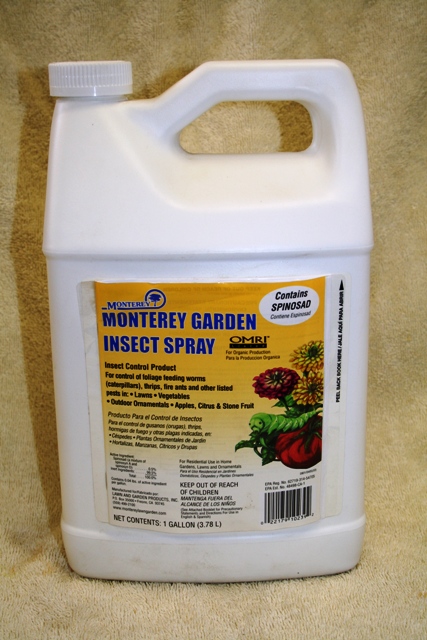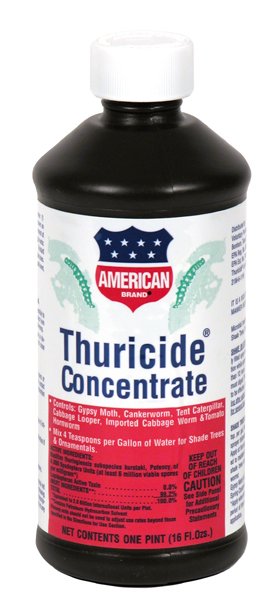Q. What caterpillars should I be controlling now? I know they will start becoming a problem soon.
A. Watch your temperature guide like your temperature app on your phone. Watch your vegetables or fruit trees. The principal insect that infests many vegetables in the tomato family as well as grapes is the hornworm.
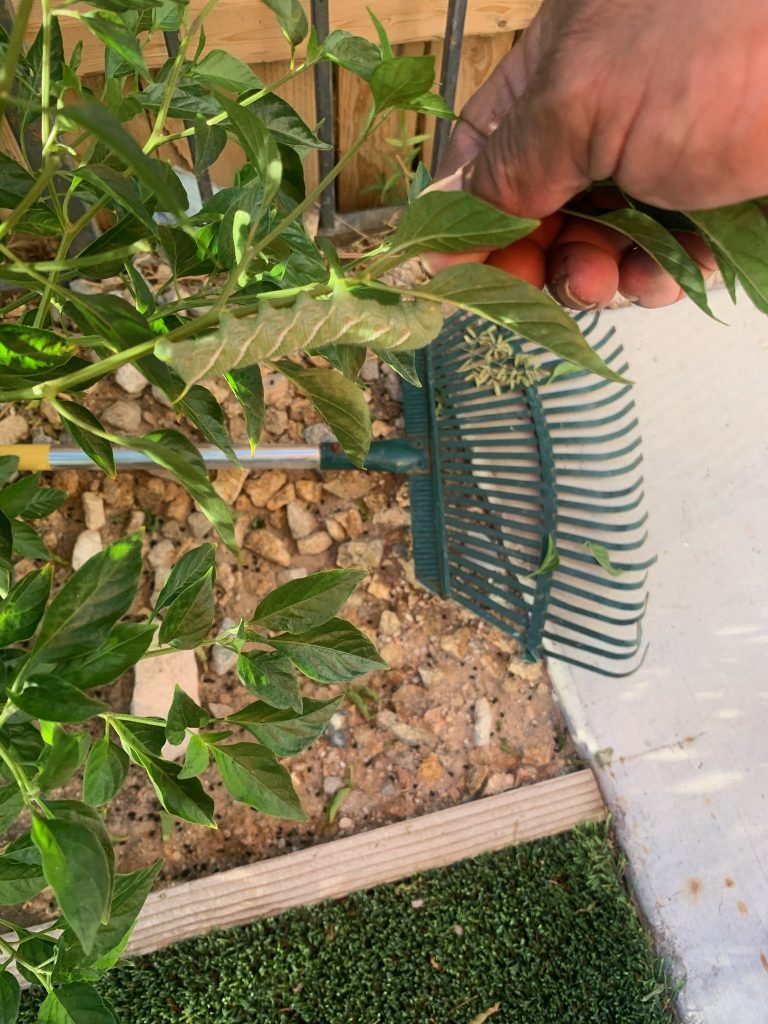
If the fruit is not yet present, they will eat the leaves as it gets larger. Once the fruit is formed, watch out! A hornworm usually has a spine on its rump and can get as big around as your thumb as it eats. It stats small when its young but will get about 4 inches long as it matures. The adults will be present now. About a month or two from now I will stand still for about fifteen seconds until I see leaves move. That movement signals me I missed one and that one will be thumb sized! Any gardener who has been gardening for a while has a horror story or two about hornworms.
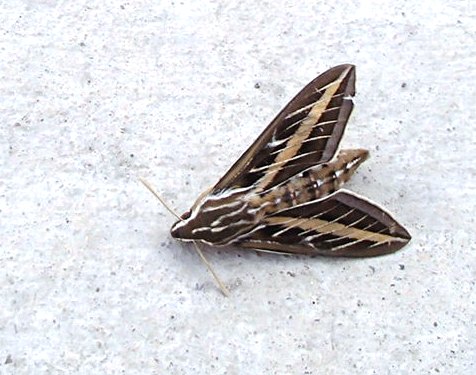
The tomato hornworm that causes damage is the immature form, the larva (caterpillar) of its adult moth. The adult form of this insect, the hummingbird moth (or sphinx moth), normally hovers around plants (like a hummingbird) when it starts to get dark. The moth form of this bug causes no damage. Nada. In fact, it is intriguing to watch. The moth comes early first. The hornworm larvae come second and get bigger and bigger.
Another “worm” or “caterpillar” that causes problems is the much smaller tomato fruit worm (aka corn earworm). It causes damage after the fruit has formed. For us, the tomato fruit worm is less of a problem than the hornworms. It will feed on the leaves as well but prefers to make holes in the fruit of tomatoes, peppers and eggplant after they formed.
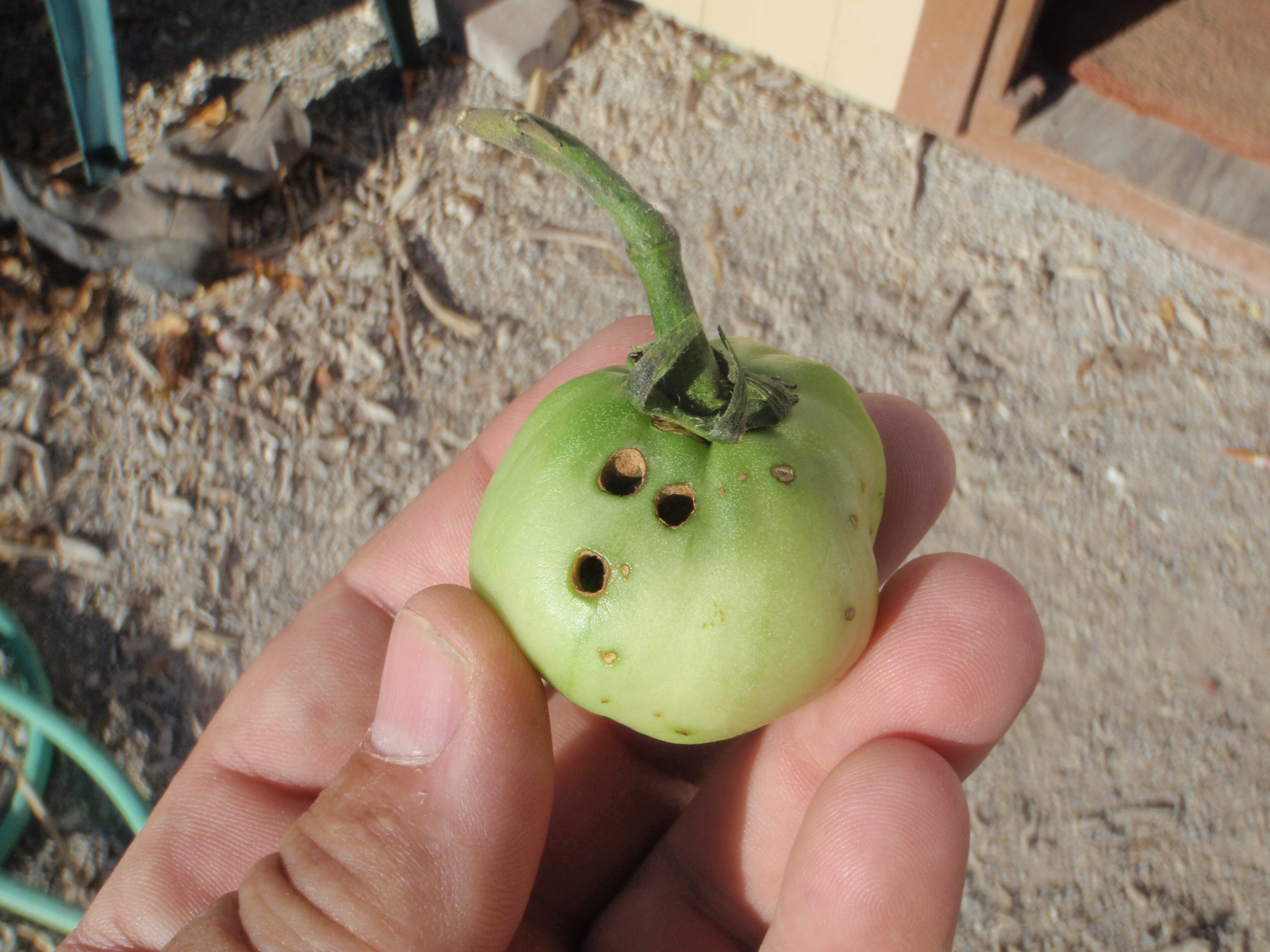
Control
Both are controlled with the same products, either a Bt product (Bacillus thuringiensis, a natural control product) or Spinosad product (another natural control product) sprays or dusts. The spray lasts about 7 to 14 days depending on the weather. Look at the label. Start spraying soon after you plant tomatoes and repeat Bt sprays about one week apart or more often. Spinosad lasts longer than Bt products. Spray about three weeks apart. Make sure to cover the undersides of leaves. It may pay to add a sticker/spreader to the spray mix.
